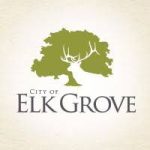Even before the pandemic, cities—large and small—wrestled with ways to build their local and regional economies.
For some cities, it made sense to engage in what is known as ‘economic hunting,’ which involves attracting a large corporation to come into the area with a new headquarters, manufacturing plant or warehouse. (Think of the Tesla Gigafactory choosing Reno in 2014, for example, or the 2017 competition for a second Amazon headquarters that garnered 238 proposals.)
This type of major employer can offer high-wage jobs, of course, but there is also a downside, in that often tax breaks and other financial giveaways are necessary to beat out competitors. And that can make it harder for a city to provide the infrastructure—transportation, education, health care and housing—needed for its residents, as well as the corporation’s new employees.
This is where the idea of Economic Gardening can make a lot of sense. Rather than bring in an outside company, this ‘gardening’ approach works with existing local businesses and helps them grow. Specifically, it focuses on ‘second stage’ companies, or those that generate between $1 million and $50 million in revenue and employ between five and 99 employees, because research shows these companies—when they flourish—actually provide the majority of an area’s jobs.
Here in Sacramento, the city has offered an Economic Gardening ‘2.0’ edition, a partnership between the National Center for Economic Gardening and Berkeley Strategy Advisors, that provides a $50,000 grant to help business owners implement the recommendations that are designed for them.
“This pilot program has had so much success, especially given how our businesses made it through COVID.”
Lorrie Clark, project manager of City of Sacramento’s Office of Innovation and Economic Development
“The city has engaged in several strategies—capacity building efforts—to increase the sustainability of local companies—and Economic Gardening is one of those programs,” says Lorrie Clark, project manager of City of Sacramento’s Office of Innovation and Economic Development. “We launched E.G. 2.0 because we found we can teach businesses … but if they don’t have the funds to invest in those areas, our efforts aren’t fully executed.”

Sacramento’s pilot program offers a select group of companies 36 hours of services from the NCEG’s team of specialists, with an emphasis on corporate databases, GIS systems, SEO and web marketing tools. The first ‘cohort’ included local companies such as AHI Construction, Honey and Preservation & Co. The second ‘cohort’ included, among others, Sagent Marketing, Pachamama Coffee and FPS Autoparts.
“Stage 2 businesses are the most important … because we can help catapult them to the next phase of their business,” says Clark. “And Stage 2 companies that scale up are already committed here, they live in the community, they are likely to stay.”
Clark—and the city—believe the addition of BSA and its consultants’ help implementing these NCEG recommendations is key. “We saw the EG model but thought we could make it better with 2.0,” she explains. “After people get some good advice, BSA adds another element of strategy. You have this information, but now you have the opportunity to ask some questions and get some consulting.” This includes one-on-one consultation, technical assistance and funding through implementation.
In fact, it can be compared to starting an exercise regimen. “It’s one thing to have a workout program, but it’s another thing to have a coach that makes you do it,” she adds. “This pilot program has had so much success, especially given how our businesses made it through COVID.”
E.G. 2.0 is now accepting applications for a third cohort of local companies. For more information about Economic Gardening 2.0, including whether your company might qualify and how to apply, see http://www.cityofsacramento.org/Economic-Development/Innovation/Economic-Gardening




























